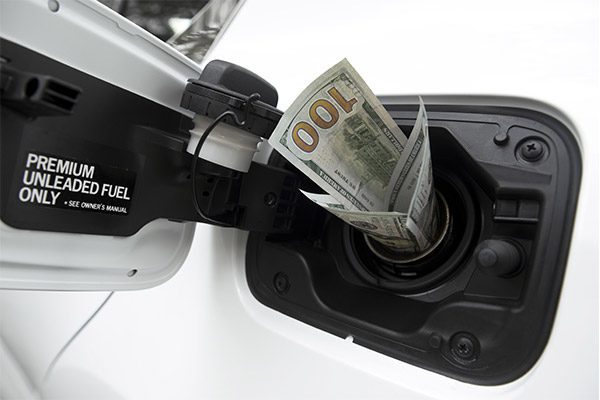Saving money on gas is a priority for many in today’s economic landscape, where fuel prices are a significant part of household budgets. While common advice often circles around carpooling or public transport, numerous other unique ways exist to reduce fuel expenditure. This article explores five such methods, offering innovative strategies to save on gas.
1. Optimize Your Vehicle’s Aerodynamics
The first approach involves optimizing your vehicle’s aerodynamics. Aerodynamics plays a crucial role in how much fuel a car consumes. The more aerodynamic a vehicle, the less resistance it encounters from air, leading to lower fuel consumption. You can improve your car’s aerodynamics by removing unnecessary external accessories like roof or bike racks when not in use. Although useful, these items create additional air resistance, increasing fuel consumption.
Moreover, keeping windows closed is beneficial, especially at higher speeds, as open windows can cause drag, added John Webster, the owner of Pcbinsider. This might seem counterintuitive, as many believe air conditioning heavily impacts fuel efficiency. However, the drag caused by open windows can be more detrimental than air conditioning at high speeds. Additionally, regular maintenance of your vehicle’s exterior, ensuring that panels and bumpers are well-aligned, can also reduce drag, thus saving gas.
2. Leverage Technology for Route Optimization
Another effective strategy is leveraging technology for route optimization. John added, that with the advancement of GPS and smartphone applications, drivers can access real-time traffic updates and optimized routing. Navigation apps like Waze or Google Maps provide the quickest routes and help drivers avoid areas of heavy congestion. This can significantly reduce idle time in traffic, which is a major contributor to increased fuel consumption. Furthermore, these apps can help plan the most efficient route for errands or trips involving multiple destinations, minimizing unnecessary travel and saving gas.
3. Adopt fuel-efficient driving habits
Geoff Cudd, founder of Don’t Do It Yourself, said, Adopting fuel-efficient driving habits is another critical factor in reducing gas expenditure. How a car is driven can significantly impact its fuel efficiency. Practices such as smooth acceleration and braking, rather than abrupt starts and stops, can lead to substantial savings. Sudden accelerations and hard braking are known to consume more fuel. Smoothly accelerating and gradually slowing down conserves fuel and extends the life of your vehicle’s brakes and engine. Additionally, maintaining an optimal speed is essential. Most vehicles have a speed range where their fuel efficiency is maximized, typically between 50-60 mph (80-97 km/h). Driving at or near this range can lead to better gas mileage.
4. Regular Vehicle maintenance
Geoff believes vehicle maintenance is another area often overlooked when considering gas savings. A well-maintained vehicle runs more efficiently and, thus, uses less fuel. For instance, regularly checking and replacing air filters can improve a car’s fuel efficiency. A dirty air filter restricts airflow to the engine, leading to more fuel being used to maintain power. Similarly, keeping tires properly inflated is crucial. Under-inflated tires can lower gas mileage by increasing rolling resistance. The recommended tire pressure for your vehicle can usually be found on a sticker on the driver’s side door jamb or the owner’s manual. It’s not just about the fuel savings; properly inflated tires are safer and last longer.
5. Go for Alternative Options
Lastly, considering alternative fuels or vehicle options can also lead to significant savings. Hybrid and electric vehicles have become more accessible and are an excellent way to reduce dependence on gasoline. While the upfront cost might be higher, the long-term savings in fuel can be substantial. Exploring alternative fuels like biodiesel or ethanol, where available, can also be a cost-effective choice. These fuels are often cheaper and more environmentally friendly than conventional gasoline, said Tariro Goronga, CEO of DriveSafe Driving School.
In conclusion, saving money on gas requires a multifaceted approach beyond limiting driving. Substant savings can be achieved by improving vehicle aerodynamics, utilizing technology for smarter routing, adopting fuel-efficient driving habits, maintaining your vehicle properly, and considering alternative fuels or vehicles. These strategies not only help in reducing fuel costs but also contribute to a more environmentally sustainable lifestyle. As fuel prices continue to fluctuate, employing these methods can provide much-needed relief to your budget and foster a more efficient and mindful approach to driving.





























